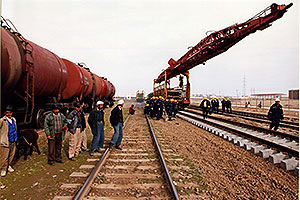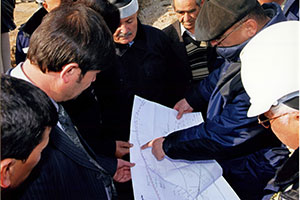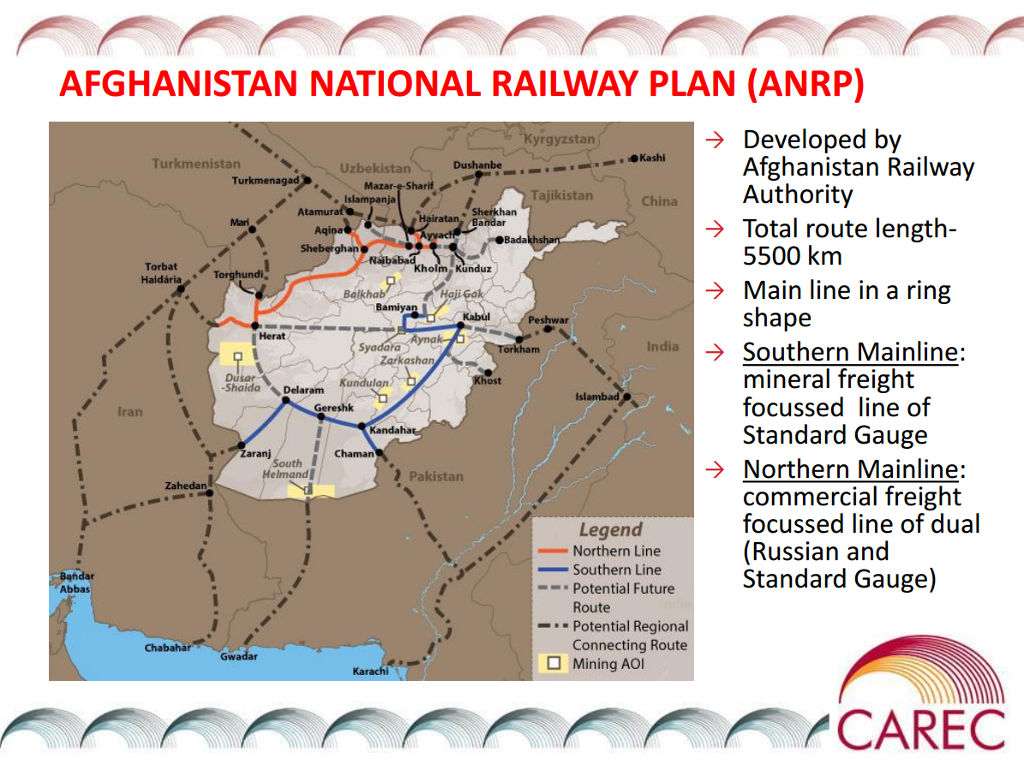Railway to Regional Integration
by Philip Wood

Today, as new trade routes connect landlocked Central Asia with the booming economies of South Asia and the Middle East, Afghanistan’s geographic position is proving a valuable asset.
Hairatan, Afghanistan—For centuries, Afghanistan’s strategic location has been a liability, inviting unwanted attention from countries near and far. But today, as new trade routes connect landlocked Central Asia with the booming economies of South Asia and the Middle East, Afghanistan’s geographic position is proving a valuable asset.
The bulldozers on the dusty northern plains of Hairatan attest to the fact that Afghanistan is poised to become a regional hub for trade and commerce. It is here, across the river from neighboring Uzbekistan, that the building blocks of a 75-kilometer single-line railway are being laid—thanks to a $165 million ADB grant.

The Hairatan border post is the gateway for almost half of Afghanistan’s road imports, but the existing transport infrastructure cannot cope with expanding trade and humanitarian relief. When completed in late 2010, the new rail line will remove the major bottlenecks that have formed at the border, quadrupling capacity and boosting regional trade.
As part of the Transport Strategy and Action Plan under the Central Asia Regional Economic Cooperation Program (CAREC), the project will open alternative routes of supply for national and international trade, as well as for humanitarian relief coming into Afghanistan.
The new line will connect Afghanistan to Uzbekistan’s expansive rail network. The initial segment will run between Hairatan and Mazare-e-Sharif, Afghanistan’s second largest city. Future links are planned that will run across the north to other parts of the country and region, including Herat, Pakistan, Tajikistan, and Turkmenistan.
“The new train line will boost freight volumes, lower costs, and raise the profile of Afghanistan as a transit route,” said ADB Afghanistan Country Director Craig Steffensen. “In addition, Central Asian states and Xinjiang, People’s Republic of China, will be able to access world markets more cheaply and easily via Afghanistan and seaports on the Gulf, thus improving their competitiveness in world markets.”
Founded in 1997, CAREC is a partnership of eight countries: Afghanistan, Azerbaijan, the People’s Republic of China, Kazakhstan, the Kyrgyz Republic, Mongolia, Tajikistan, and Uzbekistan; and six multilateral institutions: ADB, the European Bank for Reconstruction and Development, the International Monetary Fund, the Islamic Development Bank, the United Nations Development Programme, and the World Bank.
At the heart of CAREC is a plan to develop a seamless network of transport corridors connecting member countries to one another, to fast-growing economies of East and South Asia, and to established markets in Europe and the Russian Federation.
Source: Asian Development Bank, 2010-03-30


